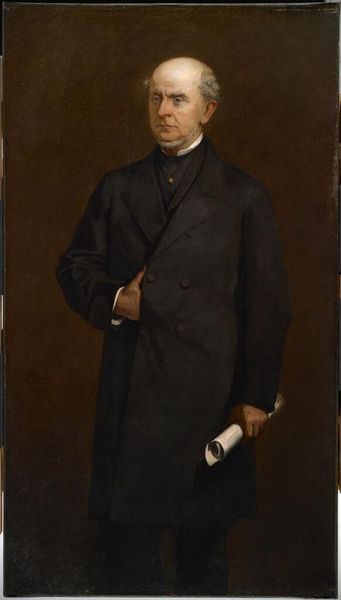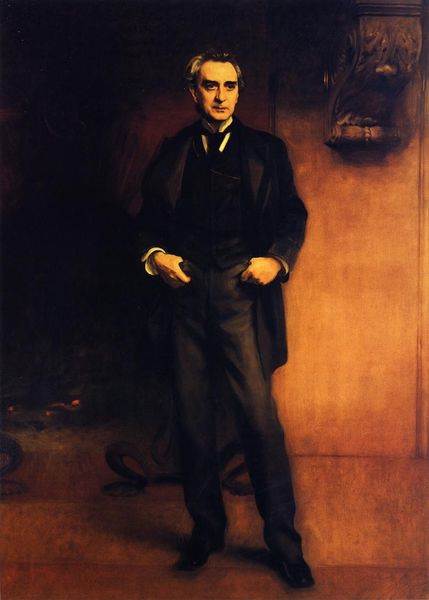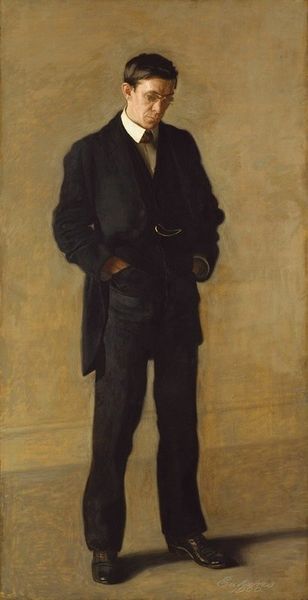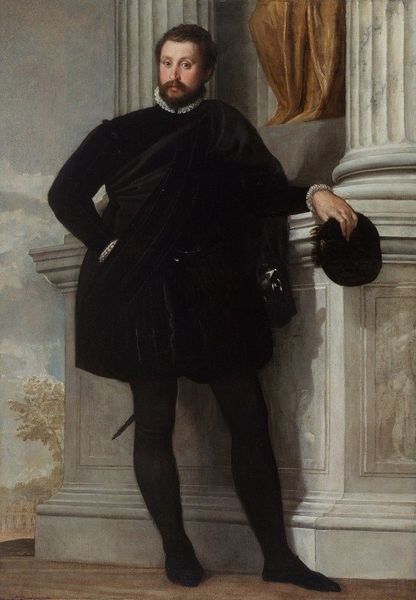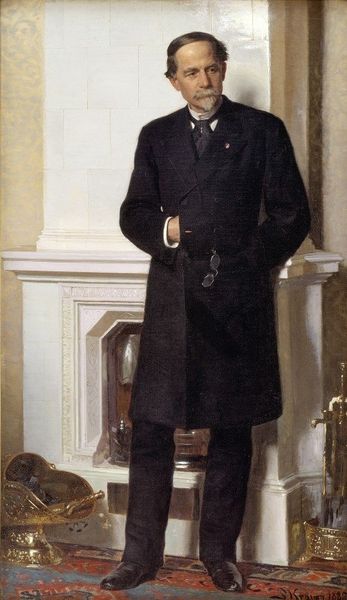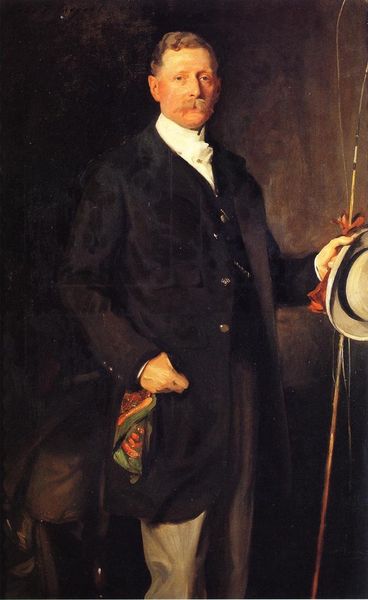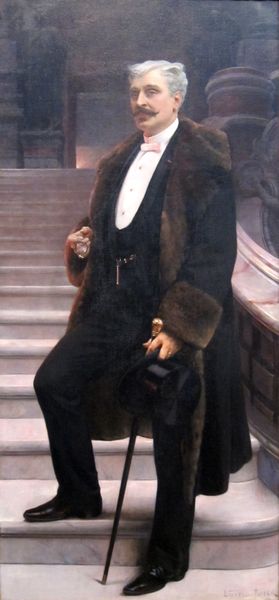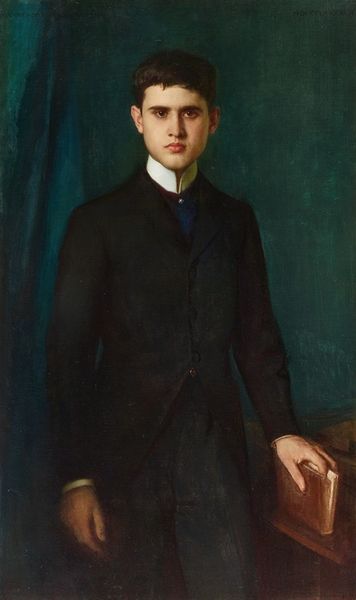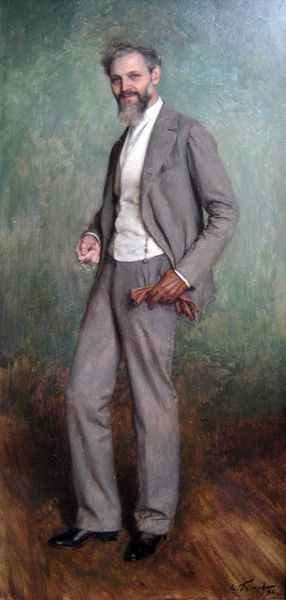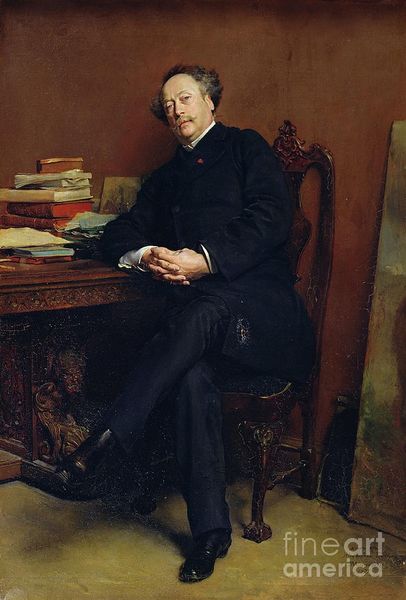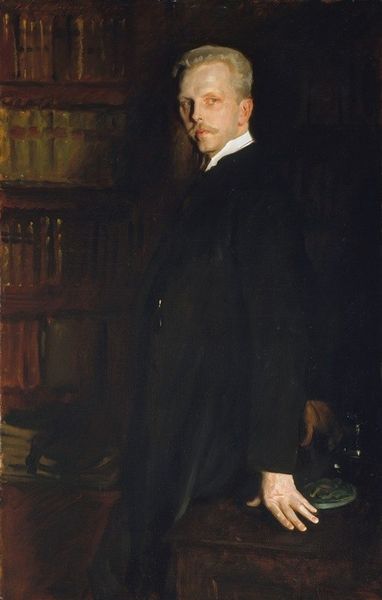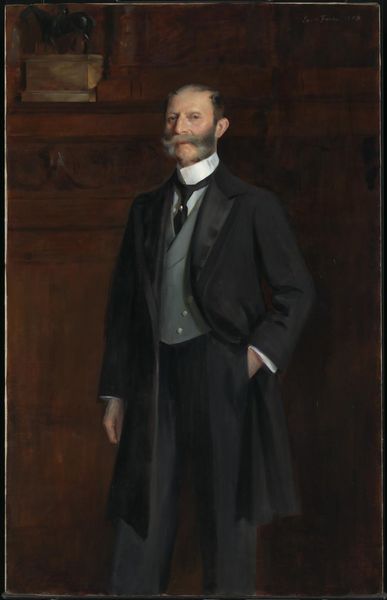
Copyright: Public Domain: Artvee
Curator: James Tissot painted this portrait of Edgar-Aimé Seillière in 1866. It's an oil on canvas, and quite a striking depiction of a man in his prime, wouldn't you agree? Editor: My first impression is of meticulous craftsmanship. Look at the way the light catches on the gloves and the subtle sheen of the fabric. It's all very… tactile. The precision is certainly admirable. Curator: Indeed. Tissot was known for his attention to detail. Seillière was a prominent figure, a financier during the Second Empire. Tissot's portrayal captures his social standing and perhaps hints at the power he held within the financial circles of Paris. It's interesting how the portrait almost monumentalizes him. Editor: Monumental, yes, but also constructed. Consider the textures – the plush drapes, the velvet chair, even the crispness of his gloves. These aren't just background details. They're carefully chosen signifiers of wealth and status, actively consumed and displayed. Curator: And of course, the pose itself is carefully considered. He's self-assured, but not arrogant. The background interior also serves to reinforce his status. Notice the understated elegance of the room itself. It reflects the values of the Second Empire: prosperity, refinement, and a certain sense of order. Editor: I am particularly drawn to those gloves and the coat he’s holding. The material is heavy; you can almost feel the weight and quality. The fact that they are not being worn suggests an air of studied nonchalance – effortless elegance manufactured through carefully sourced materials. Curator: Looking at this from a historical perspective, it serves as a fascinating window into the values of the elite in 19th century France. Patronage, social status and the way men of power wanted to be perceived is all present. Editor: Absolutely. By examining Tissot’s choices regarding material representation, labor investment and, we start to truly understand the value of commodities displayed and the message he intended. It is all material culture. Curator: A very interesting insight into the artwork! I had not thought of it that way, but that analysis deepens my own understanding, looking through history. Editor: Exactly, thank you! This helps contextualize and enrich historical events. We discover more when studying paintings and art, through material understanding.
Comments
No comments
Be the first to comment and join the conversation on the ultimate creative platform.

